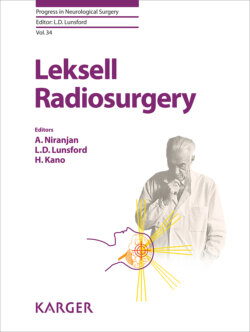Читать книгу Leksell Radiosurgery - Группа авторов - Страница 58
На сайте Литреса книга снята с продажи.
Quality Assurance of Images
ОглавлениеRegular quality control checks of the MRI unit are performed to maintain the accuracy of images. With a properly shimmed magnet, regular servicing, and strict quality assurance on the unit as well as on the images, MRI provides high-resolution images with accurate target localization. A special frame holder is used to avoid head movement during MRI.
1. Scanning the fiducial box alone in MRI to check for distortions.
2. Using a grid phantom to check for distortions.
3. 3D phantom with known geometry to check the accuracy of the MRI unit.
4. Clinical checks (every day for each patient).
We perform yearly MRI measurements using 3D phantom with 21 points of known geometry. This phantom is designed to fit on Leksell head frame. Imaging (CT, 1.5-T and 3-T MRI) is performed using clinical protocols. The data are imported in GammaPlan computers. Using GammaPlan software, the x, y, and z coordinates of each of 21 points is obtained. These measurements are performed by at least 2 independent observers. These are compared with the known coordinates of these points. The deviation from the known coordinates is calculated (Fig. 2).
Fig. 2. 3D MRI phantom data showing 3D crosses. The x, y, and z values obtained from each cross from the Gamma-Plan is compared with the known x, y, and z values of these cresses to estimate image distortion.
Clinical accuracy checks are performed for each image sequence by comparing the known frame measurement with image measurements. We measure the side to side distance between fiducials (190 mm) and top to bottom fiducial (120 mm; Fig. 3). In these measurements, we accept an inaccuracy equal to the slice thickness (1–2 mm) of a particular image sequence. The distance from the posterior fiducial to the middle fiducial on the right is compared with that of the left side. The difference in measurements implies head tilt during MRI provided the fiducial box is correctly placed on the head frame. While acquiring images the couch and gantry (CT or MRI) should be at a 90° angle. The images are exported from Imaging Suite via the Ethernet. Images are defined using Leksell GammaPlan® (LGP) software after the images are transferred to the LGP computer.
Fig. 3. Axial contrast-enhanced MRI showing measurements of known distances of fiducials. These checks are performed on the MRI console as soon as the axial images are available.
In addition, images performed at an outside institution acquired without stereotactic frame can also be imported from a CD into the planning system for pre-planning and follow-up evaluations. However, these external images need to be square (equal number of rows and columns) and in a specific image orientation. In select cases special software and applications can be used to change the orientation into the preferred format and convert from non-square to square images in order for these to be imported into the Gamma-Plan system.
